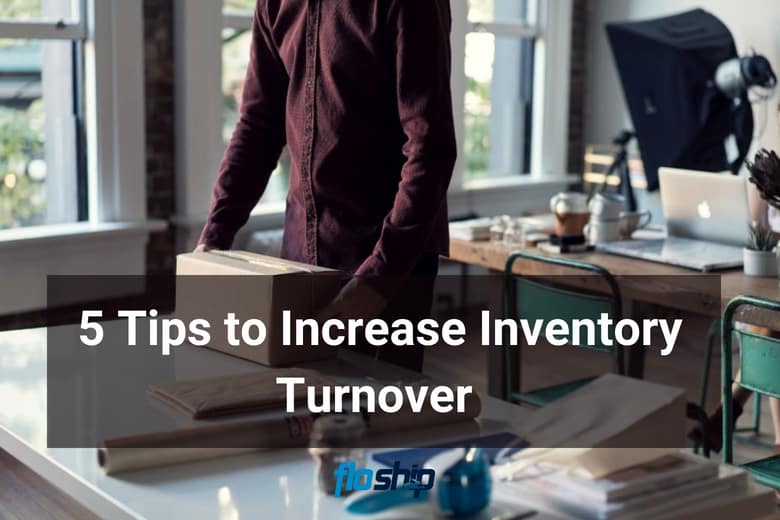Increase Inventory Turnover and Get Slow-Selling Merchandise Out the Door
By Laura Gayle, Business Woman Guide
Even if you don’t run a bakery, merchandise can get stale. Seasons and fashions change. Technology and durable goods become obsolete. The carrying costs of big-ticket items can be a drain on your cash flow. It’s important for businesses to identify their slowest-selling merchandise and take steps to turn it over.
Inventory slowdowns are a normal part of business across many industries. Sometimes, products just don’t sell as well as you expected, and it isn’t necessarily clear why. In a physical store, you might be able to strike up a conversation and ask. But in an e-commerce setting, with additional degrees of separation between you and your customers, it’s harder to gain insight into what your clients are thinking – and what they do or do not want to buy.
In order to keep your business moving forward, it’s essential to monitor inventory turnover. While it isn’t an exact science, there are measures you can take to turn things around at the first sign of a sluggishness, before you get stuck with dead stock. These five tips can help you stop or reverse the damages associated with slow-moving inventory.
 Forecast in Advance
Forecast in Advance
1. Forecast Demand in Advance
What sells when? If you don’t know, you should.
With strong seasonality in many aspects of retail, it’s well-known that not all items will be desired by consumers at all times. To successfully manage inventory, it’s up to you to put in the due diligence and forecast demand in advance of metaphorically stocking your shelves. The research needed to forecast demand can vary depending on the resources available, but an analysis of trends in sales, communications with suppliers and wholesalers, and historical performance can shed light on when and why certain products are most likely to sell. If inventory isn’t moving and your analysis indicates that these slow-selling items may attract more attention next season, consider removing listings and replacing them with more desirable merchandise until things turn around. When your forecasts indicate no demand at all, it’s probably time to cut the cord.
 Drive and Increase Demand
Drive and Increase Demand
2. Drive an Increase in Demand
If your forecasts lead you astray or you have a back room full of inventory that’s not in demand, it’s up to you to stir up interest. How you market your products can be influential in changing consumer mindsets, encouraging shoppers to consider products they otherwise may not. These strategies will often depend on your standard approach to marketing, your budget, and the tools at your disposal, but can include coupons sent via email, promotional content on social media, and larger or additional banner ads on your site. The more time you can spend creating a buzz, the more likely customers are to buy, and the more likely they are to spread the word to their friends and connections.
In planning a marketing campaign, be sure to keep a close eye on costs. Enhanced marketing strategies are only effective if you net some kind of profit on your efforts, so carefully monitor both ROI and inventory turnover to ensure increased awareness is a valid option.
 Evaluate Pricing Strategies
Evaluate Pricing Strategies
3. Evaluate (and Correct) Pricing Strategies
If items aren’t moving, it may not be an issue of interest; instead, it could be a problem with your pricing. While all business owners want to maintain stable margins and ensure a high ROI, pricing too high can mean a big dip in sales. However, simply lowering prices across the board or running regular sales aren’t necessarily the best strategies: for example, if you offer too many 50% off coupons, your customers will learn to only shop with you during sales. To make sure your price point and your practices are on track, explore the field of pricing psychology to choose tactics most likely to see an increase in sales. For example, numerous studies have investigated the power of the number nine. In addition, take time to compare your rates to those of your competitors as well as the accepted value of your products to be sure you’re staying competitive in the market.
 Improve Inventory Groups and Organization
Improve Inventory Groups and Organization
4. Improve Inventory Groups and Organization
In a traditional store, customers have easy access to everything you have for sale. A few minutes perusing aisles and browsing can paint a full picture of everything available, simplifying the purchase process. However, an e-commerce store is a little more difficult. With so many options, a robust search feature and logical organization are essential. Without strong opportunities for navigation, a potential customer could easily fail to find what he’s looking for, even if you sell a wide selection of his desired products. In order to improve the odds shoppers will find the merchandise they need, create tweaking your approach to strengthen your inventory grouping and organization. This can range from enhancing search options to building a better filtering system that breaks down brands, sizes, and genders, if applicable, to tweaking the text-to-visual ratio to make products easier to find.
 negotiate rates
negotiate rates
5. Negotiate Rates Regularly
The prices you set for your products are based on multiple factors, including your personal overhead costs for storage and fulfillment, the rates you get from your vendors, and your target margins. Most e-commerce sellers have a base price they can’t go below; dipping beneath these benchmarks can mean eroding profits and an increased potential for losses. Instead of paying too much for less-than-desirable inventory items, make negotiation a regular part of your business practices. When you’re paying less for products that don’t have a strong sales record, the pain of storing inventory a little longer becomes easier to manage, providing a safety net of sorts. If your inventory is seasonal, ordering on the off-season, or on the tail end of the busy season, may yield lower rates.
E-commerce is rarely easy, no matter what you’re selling or who you’re selling it to. When slow-moving inventory threatens to stand in your way, taking action early can stave off the potential of high storage costs in exchange for little, if any, revenue. By thinking strategically, planning ahead, increasing demand, and staying vigilant regarding pricing, it’s possible to ensure consistent inventory turnover for the betterment of your business.

Ready To Upgrade Your Logistic Solution?
Speak to Floship ecommerce logistic consultant about improving your global support chain today




